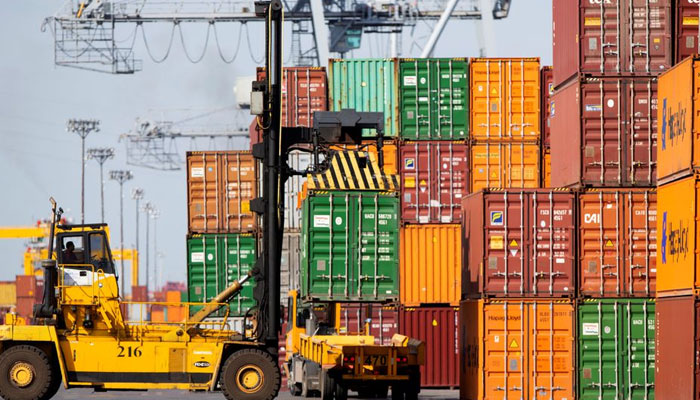Trade deficit widens sharply by 64.8% in July-April as imports rise
During July-April, imports surged to a whopping $65.5bn, while exports clocked in at $26.23bn
May 07, 2022

- Imports surged to a whopping $65.5bn during July-April.
- Exports clock in at $26.23bn during ten-month period.
- Trade deficit in April swells 23.7% to $3.74bn.
ISLAMABAD: Pakistan's 10-month (July-April) trade gap widened 64.8% to a massive $39.26 billion, indicating that pressure is mounting on the country’s external balances with each passing day, The News reported, citing data released by the Pakistan Bureau of Statistics (PBS).
Outflow from the economy (deficit) is much higher than what overseas Pakistanis are sending back to their families each year in the form of remittances.
Consequently, this deficit would put pressure on Pakistan’s balance of payment position in the months to come, resulting in further depreciation of the rupee that may stoke inflation, forcing the central bank to further tighten its monetary policy.
During the first ten months of the ongoing fiscal year 2021-22, imports surged to a whopping $65.5 billion, while exports clocked in at $26.23 billion, the PBS reported.
Read more: Inflation in April swells to highest in two years
In the same period of the last fiscal, imports stood at $44.73 billion and exports at $20.91 billion. This translates into a 25.46% growth in exports and a 46.4% increase in imports.
The trade gap has widened by 64.8%, or $15.43 billion, from the corresponding period of the last fiscal year.
Goods exports in April 2022 picked up the pace and rose 29.5% to $2.873 billion from $2.218 billion in the corresponding month a year ago, while imports rose by 26.2% to $6.615 billion from $5.24 billion in April 2021.
While comparing trade performance with the previous month, goods exports in April 2022 increased by 3.27% from $2.78 billion in March 2022. Imports during April 2022 also increased 2.96% from $6.425 billion in March this year.
The trade deficit in April 2022 swelled 23.7% to $3.74 billion from $3.02 billion in the same month a year ago.
Read more: Pakistan needs to reduce its current account deficit, IMF says
Economists believe that on the demand of the International Monetary Fund (IMF), Islamabad has substantially allowed the rupee to devalue against the US dollar in order to manage external balance, increase exports, and cut imports, but unfortunately, to no avail.
In addition, COVID-19 also played a role in affecting the country's trade performance, as first, the international commodity prices heated up and then crude oil also peaked. In the meantime, the international goods transportation costs also jumped several times.
During the last fiscal (2020-21) trade deficit stood at $31.1 billion, 34.3% more than the $23.159 billion recorded in FY19-20.
In FY21, imports arrived at $56.405 billion and exports $25.30 billion. During FY20, exports hit $21.39 billion, while imports $44.55 billion, resulting in a deficit of $23.159 billion.
According to trade statistics for international services during July-March 2021-22, local companies imported more services than they exported. The trade deficit in services ballooned 63.64% to $3.18 billion in the period under review from $1.94 billion in the same period of FY21. During this period, the economy imported foreign companies’ services for $8.33 billion, while exported services worth $5.156 billion.
Read more: Soaring inflation — does the government have a plan?
In the same period of FY20, the country’s services exports (inflow) stood at $4.404 billion, and imports (outflow) were recorded at $6.347 billion. This represents an increase of 17% in exports and 31.3% in imports of services.
In March 2022, services exports stood at $668.3 million and imports at $932.1 billion, reporting a deficit of $263.9 million. In February 2022, exports were recorded at $535 million and imports at $825.85 million, with a deficit of $290.9 million. During the month under review, exports went up by 24.9% and imports by 12.87% compared to the previous month.
Comparing March 2022’s services trade performance with the same month of the last year, exports jumped 20.1%, and imports surged 25.3%.
In March 2021, services exports stood at $556 million and imports at $744 million, with a deficit of $187.97 million, which brought the deficit to 40.37% in March 2022.











